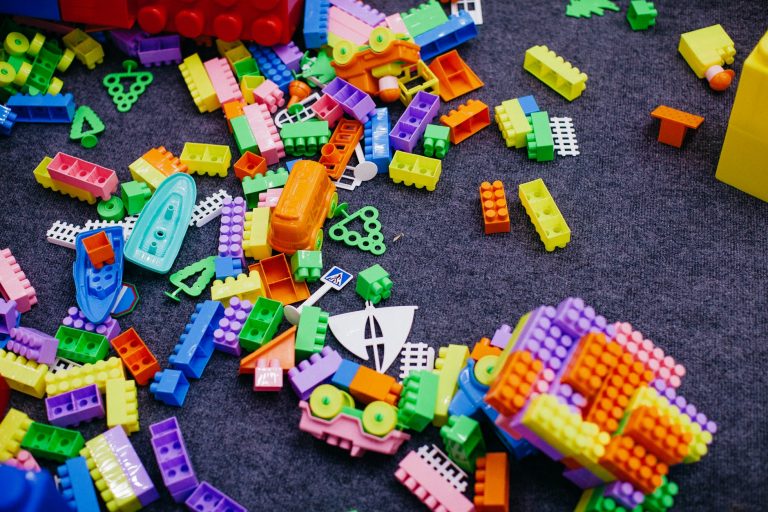Blog
EDUCATION | 9 ways to keep your nursery health and safety compliant
Written by Hannah Kennedy on 12 February 2021

Understanding the nuances of health and safety in the early years is essential for nursery owners and staff. In this blog, we’ll explore the key aspects of keeping a nursery health and safety compliant, offering insights and practical tips to ensure the well-being of children and staff in these crucial learning environments.
The law does not expect all risk to be eliminated. However, employers must take “reasonable precautions” and train staff so that they are aware of their responsibilities. This means that risks must be assessed and reasonable steps taken to mitigate them.
Do you need support?
Speak to us for an honest, no obligation chat on:
0345 226 8393 Lines are open 9am – 5pm
Sensible safety management in nurseries is when…
The leadership team understands the nursery’s Health & Safety Policy and applies it practically to the real risks posed in the nursery setting.
Key staff have clearly-established roles and responsibilities and understand their health and safety duties.
Paperwork is kept to a minimum with the significant hazards identified, their risks adequately controlled, and precautions clearly documented where needed.
In this article, we discuss nine things you need to tick in your nursery risk assessment and the sorts of safety measures that should be applied in nursery settings.

1. Movement around the nursery
According to HSE statistics, 55% of all accidents in education are caused by a slip or a trip. Many of these incidents can be easily avoided by ensuring:
- Internal flooring is in good condition;
- Lighting is bright enough to ensure safe access to and egress from the site;
- Robust procedures are in place for spillages;
- There are no trailing electrical cables/leads;
- Walkways are kept clear;
- Gardens are regularly checked for the presence of harmful objects; and
- Storage areas, stock rooms and staff rooms are always left in a tidy state, with all items placed in safe positions on shelves or in lockers to avoid injury to people.
2. Work at height (falls)
A book or swivel chair is not an appropriate way to reach something up high. In your risk assessment, can you say:
- There is an ‘elephant-foot’ step stool or stepladder available for use where necessary
- Above-ground-floor windows are secured to prevent falls?
- Window openers are provided for high-level windows?
3. Furniture and fittings
Despite the financial pressures in education, it is still very important to maintain furniture and fittings.
When assessing risk in your premises, check that you can answer ‘yes’ to these questions:
- Are permanent fixtures in good condition and securely fastened?
- Is furniture in good repair and suitable for the size of the user, whether adult or small child?
- Is portable equipment, such as a TV set, stable on a suitable trolley?
- Where window restrictors are fitted to upper-floor windows, are they in good working order?
- Are hot surfaces of radiators, etc. protected where necessary to prevent the risk of burns to vulnerable young people?
If the answer to any of these questions is no, then you need to ensure that steps are taken, so far as reasonably practicable, to mitigate the risk.
Additionally, equipment should be safe to use and clean – providers should be aware of the hygiene requirements.
4. Manual handling
Remember, manual handling tasks should be avoided wherever possible. Where it isn’t possible to avoid handling a load, suitable safety measures should be introduced to prevent and avoid injury.
This doesn’t mean conducting a risk assessment every time someone carries something, such as handing out books, but it does mean ensuring adequate support is there if a heavy object needs moving. This could be as simple as providing a trolley for transporting a television or having another member of staff assist when moving heavy equipment.
Staff should also be trained in correct manual handling techniques and the potential risks to help ensure any tasks that involve bending and lifting are properly planned and carried out with due care and attention to back and body posture.
5. Safety Rules
Inform and keep staff up-to-date with health and safety guidelines for early childhood centres, such as:
- Implementing a no running policy indoors.
- Not allowing children to use equipment/apparatus without adult supervision.
- Teaching children safe methods for carrying equipment, such as scissors or chairs.
- Ensuring hot drinks are kept in cups with lids on to avoid spills.
- Never leaving groups of children unsupervised.
6. Electrical equipment and services
Answering ‘yes’ to these questions is a good indication that your nursery is compliant.
- Are fixed electrical switches, plug sockets and cables in good repair?
- Are plug sockets that are within children’s reach covered?
- Has portable electrical equipment been visually checked and tested at suitable intervals to ensure its safe use? A sticker may show it has been tested.
- Has damaged electrical equipment been taken out of service/replaced?
- Are electric cables routed to prevent trips?
7. Asbestos
At least 363 school teachers have died of mesothelioma since 1980, and 249 of these deaths have occurred since 2001.
These shocking statistics should not be ignored. If your premises contain asbestos, good safety measures in nurseries include:
- Ensuring the location of asbestos-containing materials (ACMs) and its condition in the classroom is provided and explained to staff; and
- Obtaining guidance on securing pieces of work to walls/ceilings that may contain asbestos.
8. Fire
If there are fire exit doors in the classroom, are they unobstructed, unlocked and easy to open?
In addition to this, nursery leaders need to be able to confirm that:
- Fire-fighting equipment is in place.
- Fire evacuation procedures are clearly displayed.
- All staff are aware of the evacuation drill, including arrangements for any vulnerable adults.
9. Ventilation and heating
A classroom that is too hot or too cold can affect a child’s ability to learn. With that in mind, you should have safety measures in place in your nursery and be able to answer the following questions:
- Do rooms have natural ventilation?
- Can reasonable temperatures be maintained?
- Are measures in place, including blinds, to protect from glare and heat from the sun?
Sensible judgements
This is by no means an exhaustive list of the safety measures needed in a nursery setting and you should identify any other hazards associated with your day-to-day activities, including any further action needed.
Remember, simply referring to model assessments or other published schemes is insufficient; there must be evidence that these assessments have been consulted and adapted where necessary to suit your nursery.
If you are able to demonstrate that you are assessing risk in these nine areas, then you are going some way to being health and safety compliant.
Ultimately, sensible judgements are all that is generally required to achieve maximum benefits for children while ensuring they are not exposed to significant risks. This is particularly important in early years settings, as children should be able to grow, develop and safely take appropriate risks.
Get peace of mind
If in doubt, support from an experienced Health & Safety specialist is the best way to keep your nursery compliant and ensure you are taking all necessary steps to keep children and staff safe.
From unlimited expert advice to a bespoke nursery health and safety policy and staff handbook, WorkNest’s dedicated, fixed-fee support can help you to save time, reduce risk and become health and safety confident. To find out more, simply call 0345 226 8393 or click the button below to arrange your free consultation.
